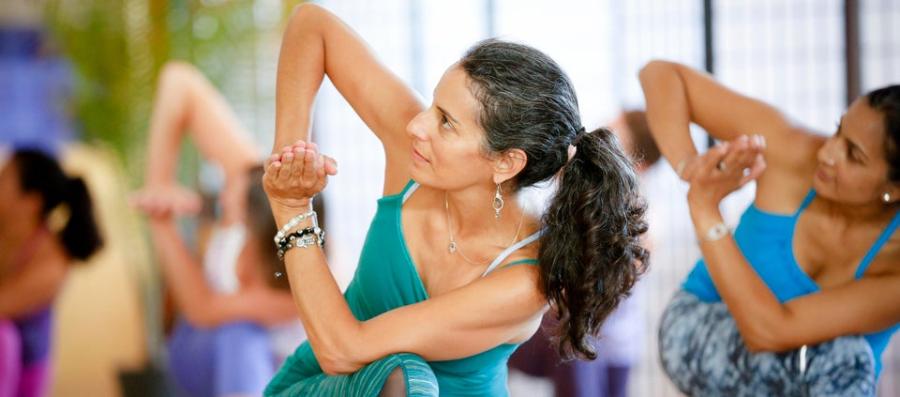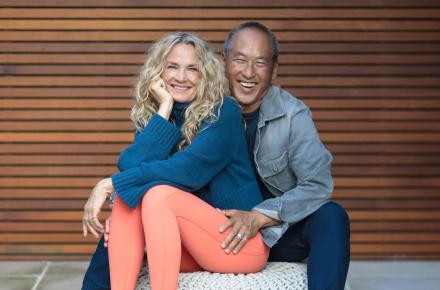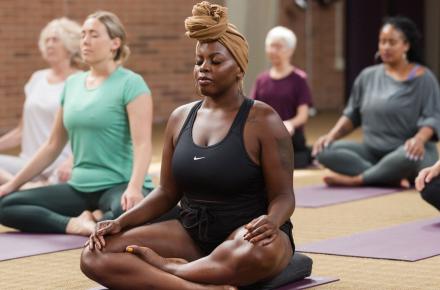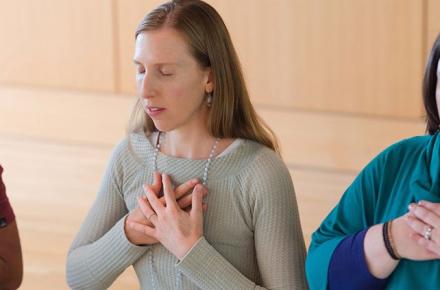Tantalizing Twists for Vitality and Balance

Twists are some of the most versatile—and requested—poses in the yoga-posture canon, and for good reason. There are numerous benefits to twisting, which makes it an integral part of a well-rounded asana practice. “Twists can help us regain a sense of homeostasis, the body’s relaxation response, which allows us to come back to balance from an anxious or depressed state,” says Kripalu Yoga teacher Danny Arguetty. “This generates a sense of grounding and stability, both physically and emotionally.”
Twisting, says Danny, aligns the spine, creating space between the vertebras. Twists nourish the spinal disks by providing added blood flow to the spine;they also soothe the nervous system by toning the spinal nerves and massaging the internal organs—which also aids in digestion.
Equally as powerful as the physical benefits is the emotional release twists provide. As Danny mentions, the action of twisting releases kinks and creaks not just in the body but in the mind as well, creating space for the entire being and promoting all-around clarity, space, and vitality.
Twisting poses come in wide array—from the simple seated spinal twists that are part of many a yoga class warm-up to active varieties such as Revolved Side Angle to cooling supine twists. Whichever way you’re rotating, here are some of Danny’s tips to keep your twists safe and nourishing:
Lengthen from the center upward. “By gathering attention to the length of the spine before you twist, elongating from the midline upward, you create more space between each vertebrae,” Danny says. This elongation creates more spaciousness in the front of the body as well, making room for the breath to move more freely when you revolve the torso. By establishing length in the spine before twisting, you invite optimal rotation while avoiding constriction.
Watch the neck. It’s common for many people to over-rotate the neck in twists, which can result in strain. The neck is made up of small, delicate bones, and thus more mobile than the upper and middle back. The key to avoiding neck strain in twists, Danny says, is to come into twists slowly, allowing the mid- and upper back to lead the action of rotation, with the head moving last. (Keeping the chin slightly tucked while twisting can also help protect it from strain.)
Focus on the opposite side. By focusing on the side of the body opposite from the direction you’re twisting, Danny says, you can create more depth in your experience, fostering multidimensional awareness of your body. For example, if you’re revolving to the right in a seated twist, bring your attention to the left side. Is your left sitting bone grounded? Can you breathe length into the left side-ribs?
Find out about upcoming programs with Danny Arguetty at Kripalu.
© Kripalu Center for Yoga & Health. All rights reserved. To request permission to reprint, please e-mail editor@kripalu.org.
Articles, programs, promotions, recipes, and more, delivered right to your inbox.
You May Also Like
Related Programs

Deep Dive


The Cosmic Call



Sanctuary



Yoga and Deep Relaxation Retreat


Just Ask Spirit


Awakening The Thinking-Feeling Self


Mindfulness Retreat for the New Year


Ignite Your Practice


The Full Scope of Yoga



The Full Scope of Yoga



Welcome to the Kripalu Path

Get Our Catalog
Get a sneak peek of everything happening at Kripalu in the coming season. Sign up to get our print catalog delivered to your doorstep.
Newcomer's Guide
New to Kripalu? Explore who we are, what we offer, and begin your transformation today.


























